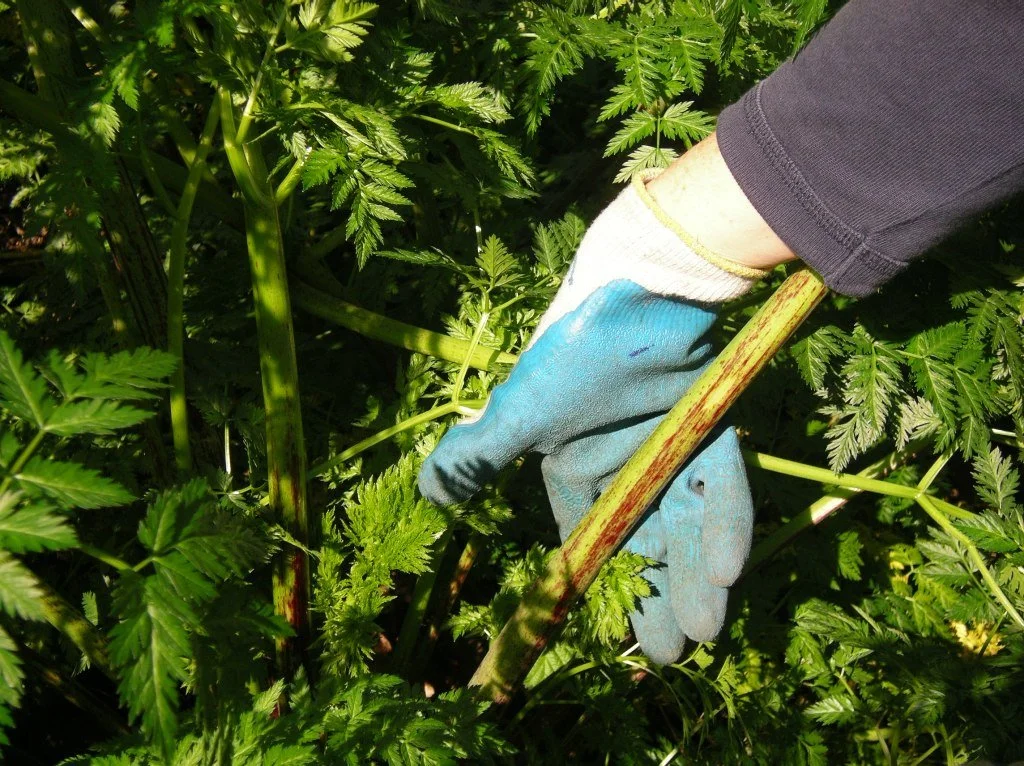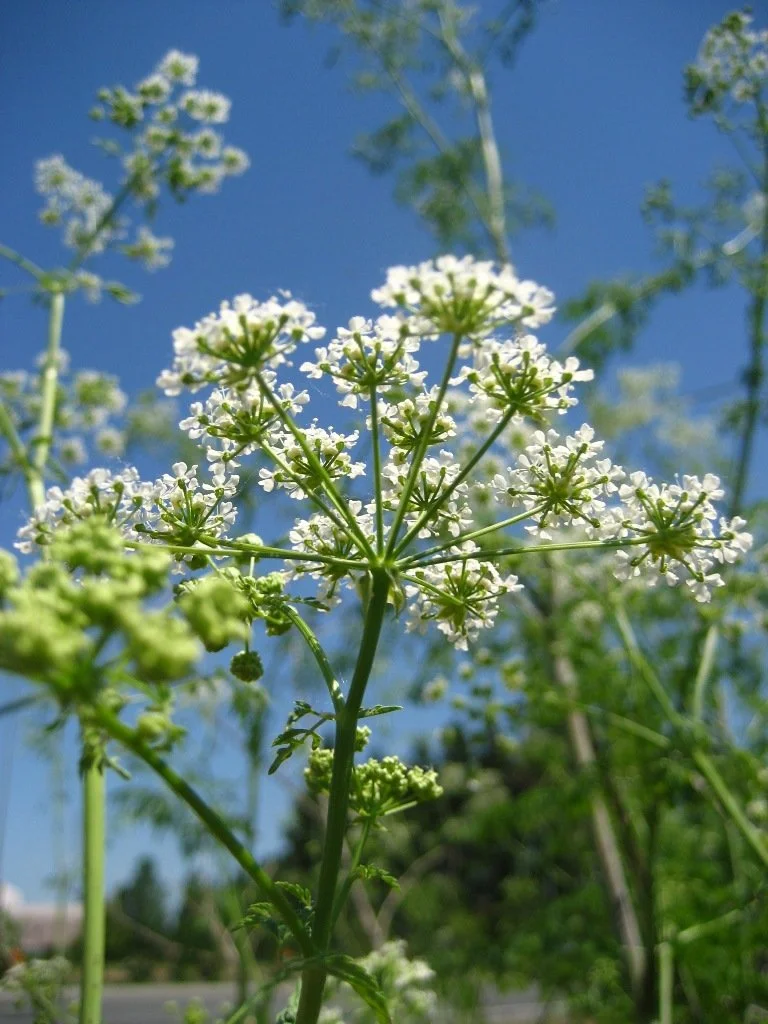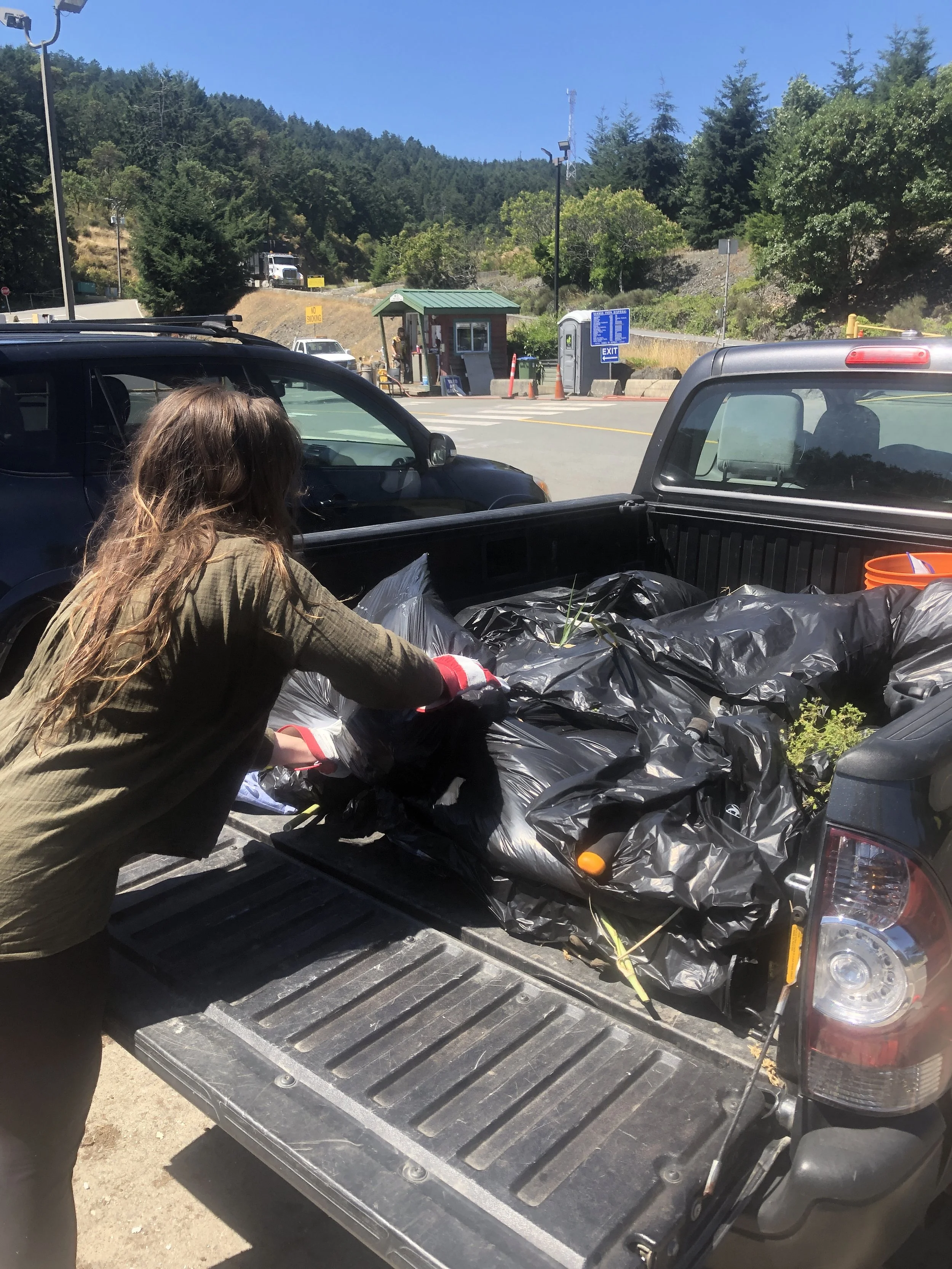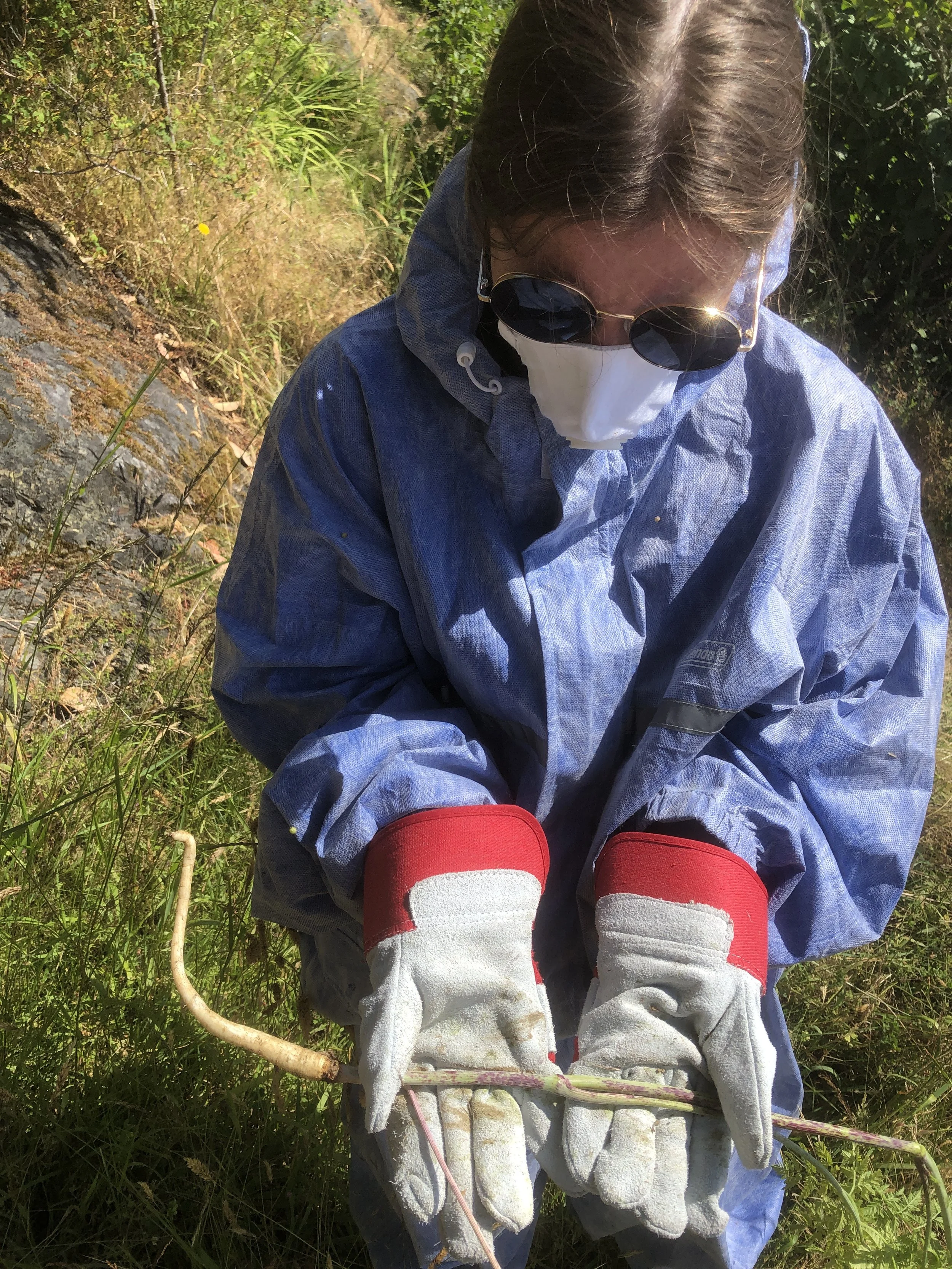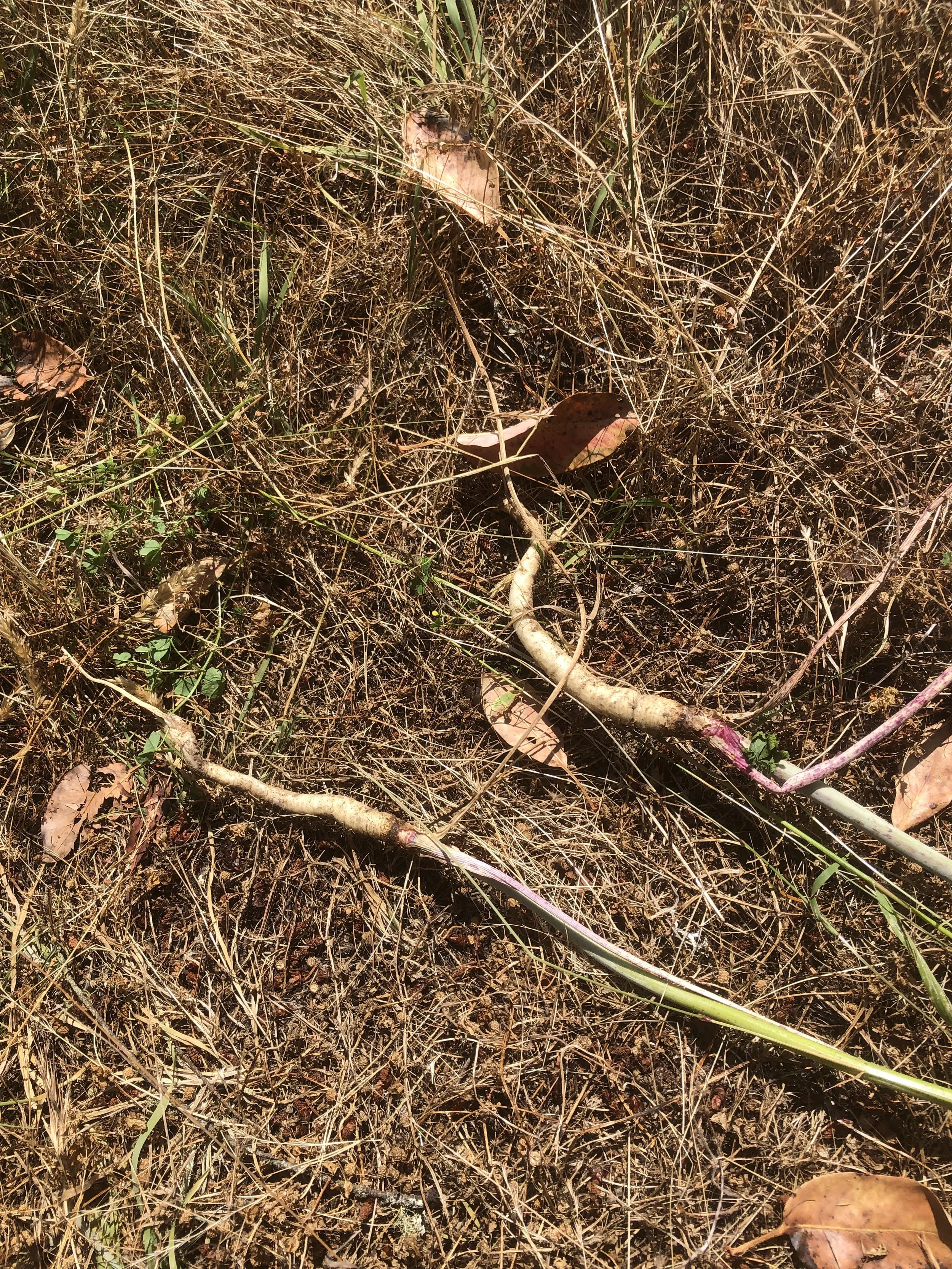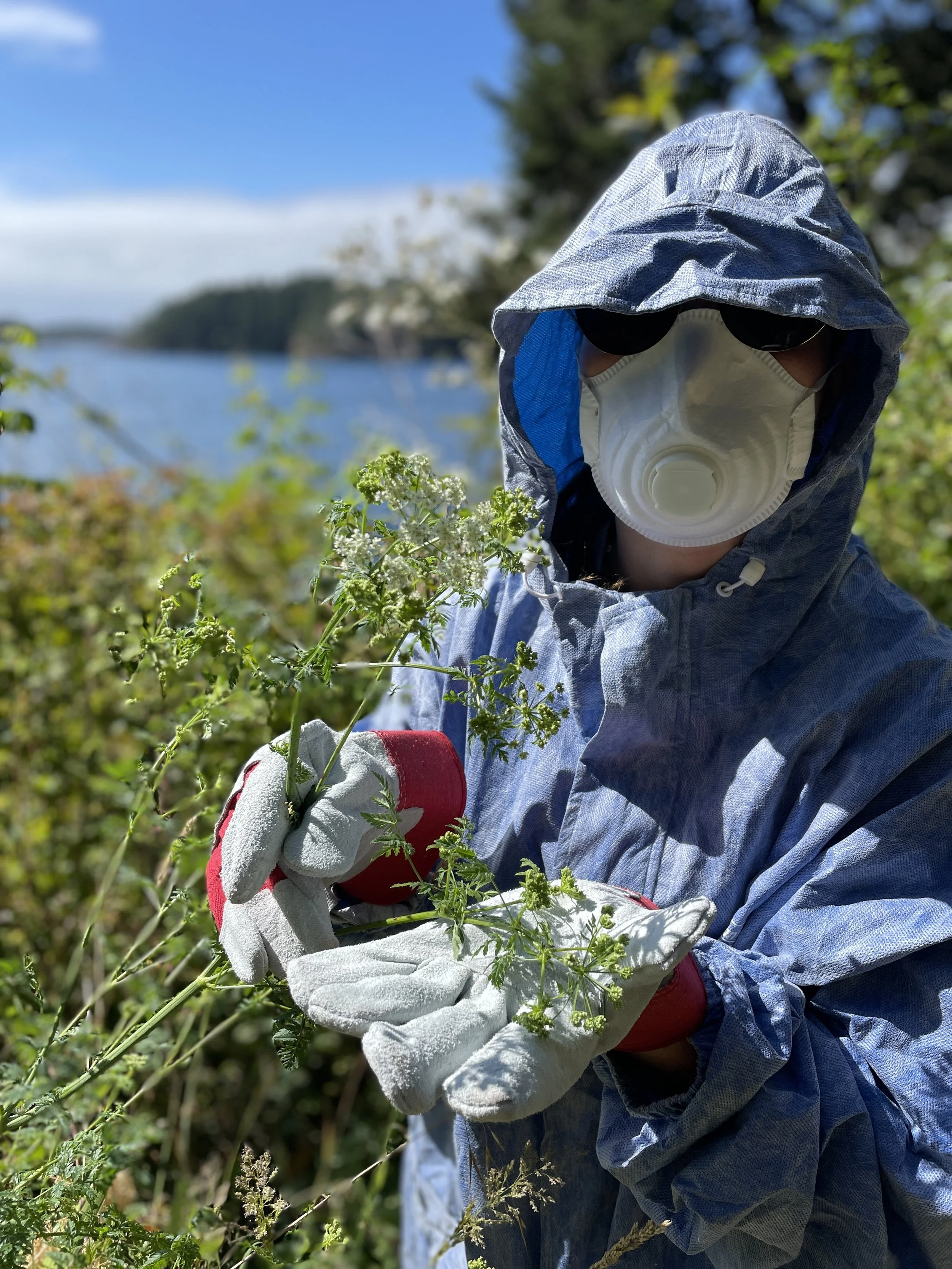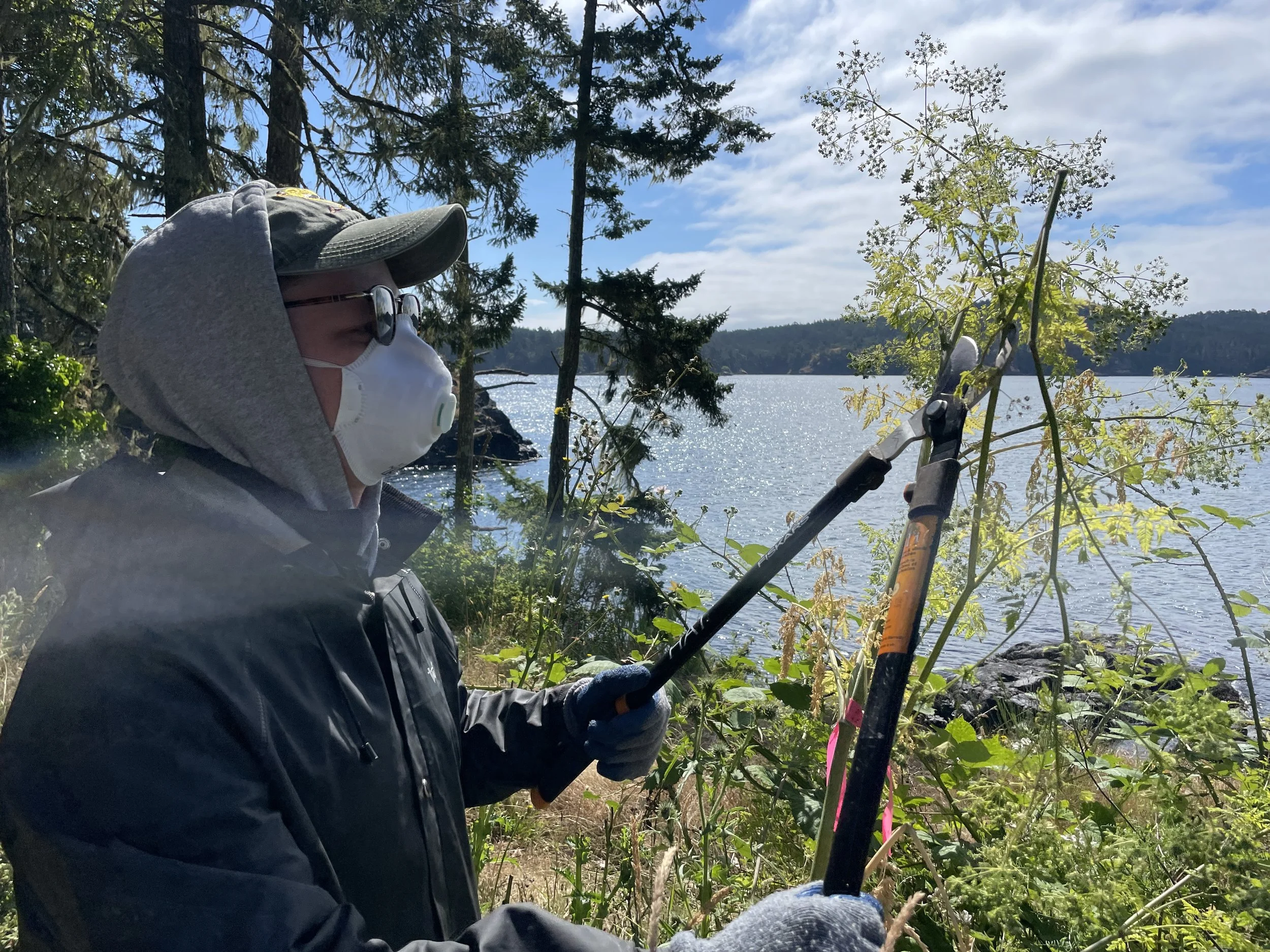Invasive spotlight: poison hemlock
Poison hemlock (Conium maculatum) is an invasive species originally from Europe, now found in areas across Canada. It has been reported throughout the Capital Regional District and up Vancouver Island. Recently there has been a significant increase in poison hemlock. Poison hemlock may pose serious human health risks.
What does it look like?
Poison hemlock is a tall (0.5-3m) branching plant with distinct purple blotching on the thick, hollow, hairless stems. The leaves are bright green, triangular, with a strong musty odor. The flowers are small, white, 5-petaled forming an umbrella-shape at the end of the branches. The purple blotches on the stem are a distinguishing feature of this plant, if you see this, you know it is poison hemlock.
Toxicity
Poison hemlock is toxic and all parts of this plant are poisonous to both people and animals. Poison hemlock contains toxic alkaloids which can remain active in a dead plant for up to 3 years. Eating this plant can kill people, livestock, and wildlife. This plant is also toxic to the skin and respiratory system.
This plant can be mistaken for edible plants in the same family such as wild carrot or Queen Anne’s Lace. Queen Anne’s Lace is a smaller plant that grows 1m high and flowers later in the summer. Pacific hemlock-parsley is another look alike found in coastal habitats.
Management
Be careful to avoid skin contact with plant materials. Use gloves, protective clothing, and eye protection when handling this plant. Be sure to wash tools, hands, and clothing after. Poison hemlock plants produce thousands of seeds and can spread quickly if not properly managed. Manage larger populations by stopping seed production. Cut the flowering stems as close to the ground as possible. You can remove younger plants by digging them up. When pulling the plants, the entire taproot should be removed to prevent regrowth. Removal is best done before flowering. If you’re doing removal while flowering, cut the heads off first to avoid leaving seeds on site. Cutting, mowing, and burning is not recommended as the plants can emit toxic fumes. Do not compost! Seeds can remain viable even after composting. Take all plant parts in garbage bags to Hartland Landfill.
In July, HAT staff, Ronna and Max, did poison hemlock removal on a newly discovered patch near a beach in a remote community.

